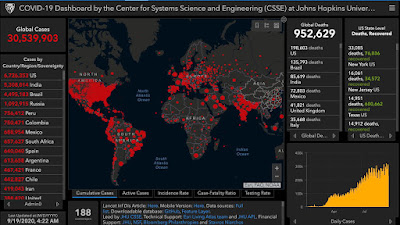“Mary Oliver On How to Live ‘Your One Wild and Precious Life’”
by Sanjiv Chopra, M.D.
“Someone I loved once gave me a box full of darkness.
It took me years to understand that this too, was a gift.”
- Mary Oliver
“The quiet, plain-spoken poet Mary Oliver died on January 17, 2019. An outpouring of emotion and tributes spanned the globe. She was both mourned and wildly revered by those for whom her words were a totem. With stark simplicity, she offered us both spiritual guidance and common sense, all of which was garnered from lessons she learned while simply meandering in the woods.
Mary Oliver’s gift was her ability to marvel at the world with an unsentimental acceptance that it (and we) are temporary. She looked clear-eyed and with unflinching certainty at the impermanence of our existence. In it she found not despair but rather joy. She chose to live in the moment and to be dazzled by it.
Mary Oliver’s roots were thoroughly midwestern. She hailed from Maple Heights, Ohio, a leafy suburb of Cleveland. From all accounts, hers was a difficult childhood. She wrote in “Blue Pastures” (winner of the Pulitzer Prize and the National Book Award): “Adults can change their circumstances; children cannot. Children are powerless, and in difficult situations they are the victims of every sorrow and mischance and rage around them, for children feel all of these things but without any of the ability that adults have to change them.”
This darkness of her youth led her to escape into nature and into books. Words and woods offered her solace. She fiercely embraced them, noting that “the beauty and the mystery of the world, out in the fields or deep inside books – can re-dignify the worst stung heart.”
We know, and she acknowledged, that overcoming adversity isn’t easy: “There are stubborn stumps of shame, grief that remains unsolvable after all the years, a bag of stones that goes with one wherever one goes and however the hour may call for dancing and for light feet.” But she persisted. She said she read, “the way a person might swim, to save his or her life,” and that nature offered her “an antidote to confusion.”
She advised, “you must not, ever, give anyone else the responsibility for your life.” And in saving her life, she rekindled so many of ours, using words that were deceptively simple but that had the power to shine a bright light into the dark crevices of our pain and misfortune and to set us free from the past. She gave us clear instructions for living a life:
“Pay attention.
Be astonished.
Tell about it.”
And for her- and for so many of us who have long sat at the knee of her prose – it worked. Mary Oliver wrote, “Having chosen to claim my life, I have made for myself, out of work and love, a handsome life. And can do what I want to with it. Live it. Give it back, someday, without bitterness, to the wild and weedy dunes.” And when she died, she gave it back.
Mary Oliver’s religion was simple. It could best be described as “gratitude.” And so, as she departed this world leaving for us so many gifts, we offer this prayer for her – thank you. To honor her, we share here one of Mary Oliver’s most powerful poems, one that offers sage advice about accepting imperfection.”
“The Ponds”
“Every year
the lilies
are so perfect
I can hardly believe
their lapped light
crowding
the black
mid-summer ponds.
Nobody could count all of them -
the muskrats swimming
among the pads and the grasses
can reach out
their muscular arms and touch
only so many,
they are that
rife and wild.
But what in this world
is perfect?
I bend closer and see
how this one is clearly lopsided -
and that one wears an orange blight -
and this one is a glossy cheek
half nibbled away -
and that one is a slumped purse
full of its own
unstoppable decay.
Still, what I want in my life
is to be willing
to be dazzled -
to cast aside the weight of facts
and maybe even
to float a little
above this difficult world.
I want to believe I am looking
into the white fire
of a great mystery.
I want to believe that the imperfections are nothing -
that the light is everything -
that it is more than the sum
of each flawed blossom rising and fading.
And I do.”
- Mary Oliver
























